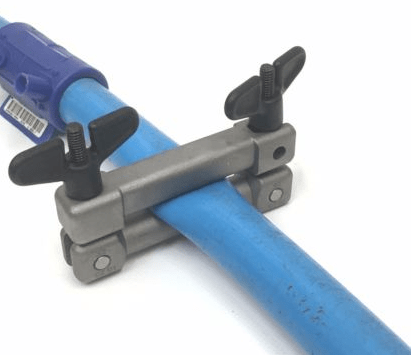SrinivasAluri
Mechanical
I am trying to create a demo centrifugal pump to show increased vibration from cavitation. I have a pump running at 2900 RPM and a 2 inch suction side pipe and 2 inch discharge pipe with a increaser. The pump is a Kirloskar DB 32/13 End Suction Pump.
I can get cavitation by closing the suction side valve and my pressure sensor on the inlet side is confirming that -pressure is close to vacuum and I can see bubbles. The problem is the pump is too noisy without closing the suction valve i.e., without cavitation. As you can see in the picture I use transparent piping and when I run the pump, I see a vortex of air bubbles on the discharge pipe. The increaser (1 inch to 2 inch) is not smooth.
Ideally, I want the vibration to increase when cavitation is simulated but in my case the pump is too noisy without closing the suction valve and the noise is going down once I start closing my suction valve, which unfortunately is opposite of what I want to show. The broadband noise around 5000Hz is going down when I close the inlet valve.
Initially I had water from discharge pipe fall openly not submerged, but I fixed that. The noise on the discharge side sounds like gravel moving.
Appreciate any help.
I can get cavitation by closing the suction side valve and my pressure sensor on the inlet side is confirming that -pressure is close to vacuum and I can see bubbles. The problem is the pump is too noisy without closing the suction valve i.e., without cavitation. As you can see in the picture I use transparent piping and when I run the pump, I see a vortex of air bubbles on the discharge pipe. The increaser (1 inch to 2 inch) is not smooth.
Ideally, I want the vibration to increase when cavitation is simulated but in my case the pump is too noisy without closing the suction valve and the noise is going down once I start closing my suction valve, which unfortunately is opposite of what I want to show. The broadband noise around 5000Hz is going down when I close the inlet valve.
Initially I had water from discharge pipe fall openly not submerged, but I fixed that. The noise on the discharge side sounds like gravel moving.
Appreciate any help.

